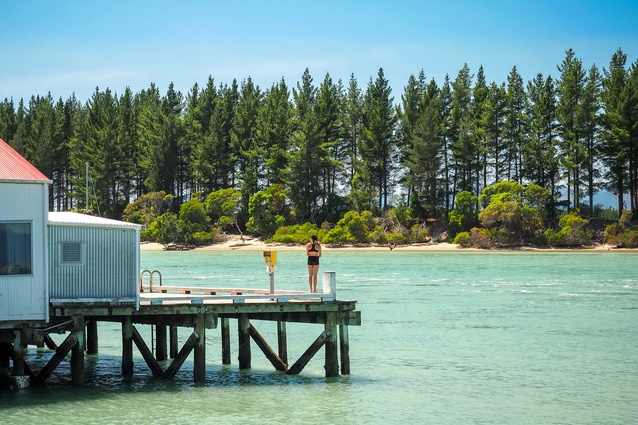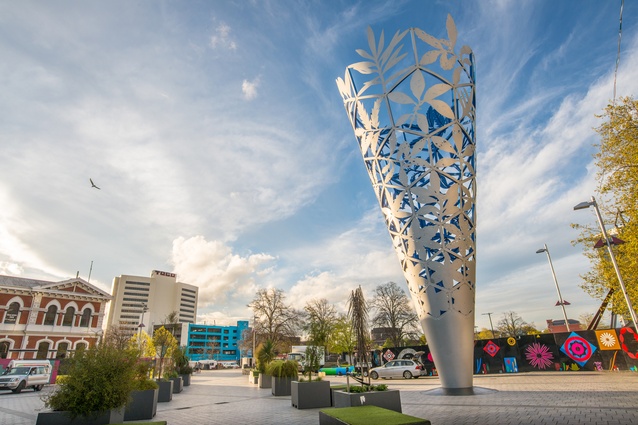Home and business: Living in harmony
The second of our column from the Building Better Homes, Towns and Cities National Science Challenge comes from Arthur Grimes, programme leader for the Regional Settlements research area. He tells us about findings from a recent study his team has completed regarding what individuals and businesses prefer when it comes to locale. It seems that the things that make a place liveable and the things that make a place good for business are at odds. But, can we have both?
Kia ora, I’m Arthur Grimes, programme leader of the Supporting Success in Regional Settlements team for the Building Better Homes, Towns and Cities (BBHTC) National Science Challenge and senior fellow at Motu Economic Public and Policy Research.
Together, the team and I have just released a new study for BBHTC that uses a deep-dive analysis of census rent and wage data from 1976 to 2013 to compile quality of life and quality of business measures for 130 towns and cities in New Zealand.

In compiling our quality of life measure, we noted that workers will accept relatively high rents and low wages to live in relatively attractive places. Thus places with high rents and low wages must have compensating attractions such as great natural and social amenities. The opposite holds for places with low rents and high wages.
To create our quality of business measure, we observed that firms will only be prepared to pay higher costs—in terms of wages and rents—to operate in cities with a productive business environment. Thus places with high rents and wages must have amenities that help to make firms more productive. Again, the opposite holds for places with low rents and wages.
Chiefly, this study aims to understand what factors attract people (and jobs) to certain cities.
The findings are important because they provide a foundation for ongoing research designed to draw conclusions for policy-makers, planners and households alike about what needs to be done to improve the quality of life and the quality of business across all regions of New Zealand.
Interestingly, what we have found is that families are drawn to warm, sunny, dry places by the sea, but firms prefer cities. And, it seems – for many towns in New Zealand – quality of life and quality of business are at odds.
Our research shows that people living in smaller places feel better in their lives than people in big places. However, businesses don’t want to be located in small places because population size is important for quality of business – meaning locations with large amounts of people are generally more productive.

There are three towns in New Zealand where we find that both quality of life and quality of business are abundant: Christchurch, Tauranga and Queenstown. Perhaps the even more interesting fact is that, over the 37-year period we analysed, people’s perception of quality of life and quality of business in these towns has remained relatively stable.
Is this to do with the fact that these towns are near bodies of water? How does water factor into our wellbeing? Why is it so important to quality of life for Kiwis?
Not only are these questions of relevance to local policy-makers, planners and those in the property sector, they are equally as important for households and individuals when choosing a place to live. By understanding what makes us want to live in one town, as opposed to another, it can help us deliver better built environments for all.
In 2013, the top five towns New Zealanders most liked to live in were Whitanga, Motueka, Coromandel, Queenstown and Katikati.
These towns, and other highly ranked places, generally have more sunshine hours, less rainfall and the presence of a coastline or a major lake near the settlement boundary. The growing importance of sunshine reflects a global trend of people wishing to move to sunnier places. It also reflects a previous study within the BBHTC Science Challenge which showed that people within a given city (Wellington) are prepared to pay more for a sunnier house.
There is a positive and statistically significant relationship between quality of life and the employment share in accommodation, food, arts and recreational services. In short, this means towns that have high employment in these sectors are also the ones we consider to be attractive to live in.
We also find evidence that when cities experience population growth, quality of life tends to go down. One possible explanation for this result is that the congestion and crowding that comes with growth are viewed by consumers as disamenities. Perhaps this serves as a warning that investment in improving local consumption amenities may be partially offset by population increases if raising if those new amenities attract new residents.

What are the factors that make towns in New Zealand good for business? Of the top 10 towns for work opportunities and firms in 2013, eight are in or around the three large cities (Auckland, Wellington and Christchurch). It is clear, therefore, that population size has an important role to play in helping companies to be more productive.
If you don’t live in a town that is by the sea, can your quality of life and/or quality of business improve? The answer is yes.
We found a number of smaller towns that have experienced a trend improvement in their quality of business in recent years while still maintaining a good quality of life. One example is Martinborough, which has leveraged its wine-growing and other positive attributes to make the town a better place for business while still being a pretty good place to live.
Future studies will look more closely at the influence of quality of life and quality of business on people’s choices of where to live, for instance following graduation from tertiary study and also for those who left Christchurch after the earthquakes.
These research streams illustrate how Building Better Homes, Towns and Cities is conducting ongoing analysis to better understand how we can develop our towns and regions in ways that support both quality of life and quality of business for all.
See the full working research paper by Kate Preston, David Maré, Arthur Grimes, and Stuart Donovan here.
Building Better Homes, Towns and Cities (BBHTC) is one of 11 National Science Challenges, funded by the Ministry of Business, Innovation and Enterprise (MBIE). BBHTC undertakes world-class research to shape New Zealand’s built environment and strengthen communities. The Challenge develops findings that will empower public, planners and policymakers with reliable information and new tools for fresh thinking and better decisions and is discovering new pathways to address the long-standing housing challenges of our most disadvantaged.
To learn more and access the research, head to www.buildingbetter.nz. Read the first of the BBHTC column about a distruptive new digital tool for urban planning here.














